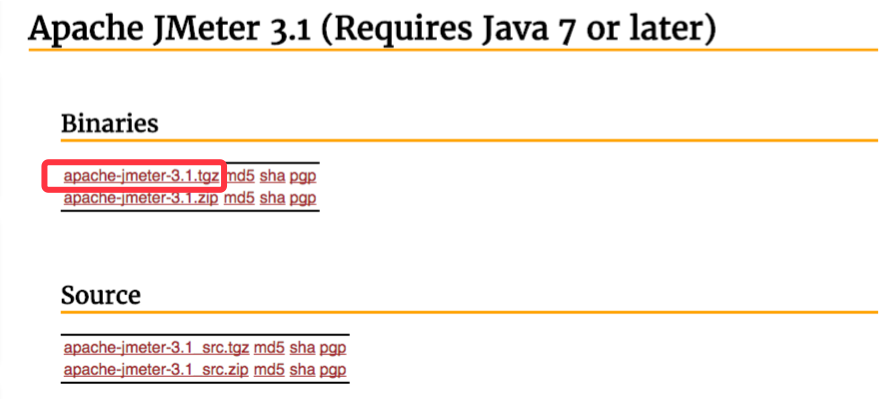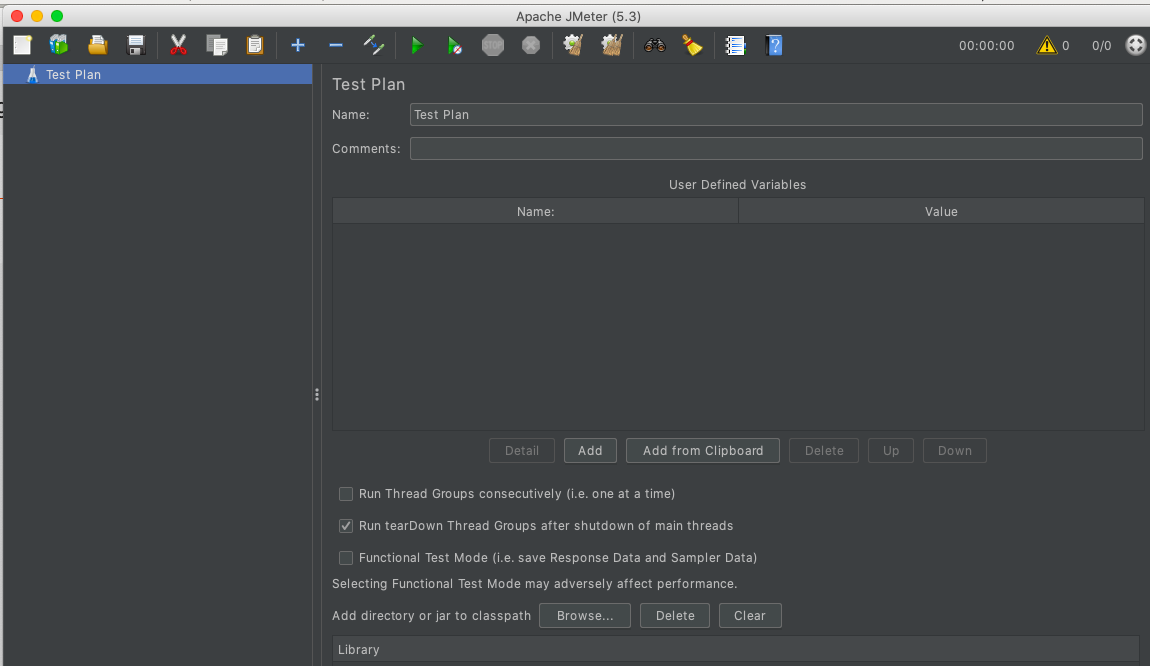- jMeter Tutorial
- jMeter Resources
- Selected Reading
Apache JMeter is a portable macOS application that runs on the Java platform and enables you to quickly test and analyze the performance of your web applications, together with their resources. Note that Apache JMeter is able to handle both dynamic and static resources. Effortless to deploy analysis. Brew install jmeter to install jmeter. Read this blog to know how to map folders from standard jmeter to homebrew installed version. Install using standard version which I would advise you to do. Steps are: Install Last compatible JDK version (7 or 8 as of JMeter 3.1). Download JMeter from here. Unzip folder and run from the folder: bin/jmeter. LoadNinja by SmartBear allows you to quickly create scriptless sophisticated load tests.
Jmeter Setup For Mac
- The output should be compared with the contents of the SHA256 file. Similarly for other hashes (SHA512, SHA1, MD5 etc) which may be provided. Windows 7 and later systems should all now have certUtil.
- Edit user.properties or jmeter.properties file in “Configuration folder” Add a dependency to JMeter in “Library folder” Add a plugin to JMeter in “Plugins folder” About author: About author: Philippe Mouawad is a developer, committer and member of the JMeter Project Management Committee at Apache.
JMeter is a framework for Java, so the very first requirement is to have JDK installed in your machine.
System Requirement
| JDK | 1.6 or above. |
|---|---|
| Memory | No minimum requirement. |
| Disk Space | No minimum requirement. |
| Operating System | No minimum requirement. |
Step 1: Verify Java Installation
First of all, verify whether you have Java installed in your system. Open your console and execute one of the following java commands based on the operating system you are working on.
| OS | Task | Command |
|---|---|---|
| Windows | Open Command Console | c:> java -version |
| Linux | Open Command Terminal | $ java -version |
| Mac | Open Terminal | machine: ~ joseph$ java -version |
If you have Java installed in your system, you would get an appropriate output based on the OS you are working on.
| OS | Output |
|---|---|
| Windows | java version '1.7.0_25' Java(TM) SE Runtime Environment (build 1.7.0_25-b15) Java HotSpot(TM) 64-Bit Server VM (build 23.25-b01, mixed mode) |
| Linux | java version '1.7.0_25' Java(TM) SE Runtime Environment (build 1.7.0_25-b15) Java HotSpot(TM) 64-Bit Server VM (build 23.25-b01, mixed mode) |
| Mac | java version '1.7.0_25' Java(TM) SE Runtime Environment (build 1.7.0_25-b15) Java HotSpot(TM) 64-Bit Server VM (build 23.25-b01, mixed mode) |
If you do not have Java installed, install the Java Software Development Kit (SDK) from www.oracle.com/technetwork/java/javase/downloads/index.html. We are assuming Java 1.7.0_25 as the installed version for this tutorial.
Step 2: Set Java Environment
Set the JAVA_HOME environment variable to point to the base directory location, where Java is installed on your machine. For example −
| OS | Output |
|---|---|
| Windows | Set the environment variable JAVA_HOME to C:Program FilesJavajdk1.7.0_25 |
| Linux | export JAVA_HOME=/usr/local/java-current |
| Mac | export JAVA_HOME=/Library/Java/Home |

Append Java compiler location to System Path.

| OS | Output |
|---|---|
| Windows | Append the string; C:Program FilesJavajdk1.7.0_25bin to the end of the system variable, Path. |
| Linux | export PATH=$PATH:$JAVA_HOME/bin/ |
| Mac | not required |
Verify Java Installation using java -version command as explained above.
Step 3: Download JMeter
Brew Install Jmeter
Download the latest version of JMeter from https://jmeter.apache.org/download_jmeter.cgi. For this tutorial, we downloaded apache-jmeter-2.9 and copied it into C:>JMeter folder.

The directory structure should look like as shown below −

- apache-jmeter-2.9
- apache-jmeter-2.9bin
- apache-jmeter-2.9docs
- apache-jmeter-2.9extras
- apache-jmeter-2.9lib
- apache-jmeter-2.9libext
- apache-jmeter-2.9libjunit
- apache-jmeter-2.9printable_docs
You can rename the parent directory (i.e. apache-jmeter-2.9) if you want, but do not change any of the sub-directory names.
Jmeter For Mac
Step 4: Run JMeter
After downloading JMeter, go to the bin directory. In this case, it is /home/manisha/apache-jmeter-2.9/bin. Now click on the following −
| OS | Output |
|---|---|
| Windows | jmeter.bat |
| Linux | jmeter.sh |
| Mac | jmeter.sh |
After a short pause, the JMeter GUI should appear, which is a Swing application, as seen in the following screenshot −
Jmeter For Mac Homebrew
This is the main page and the default page of the tool.
